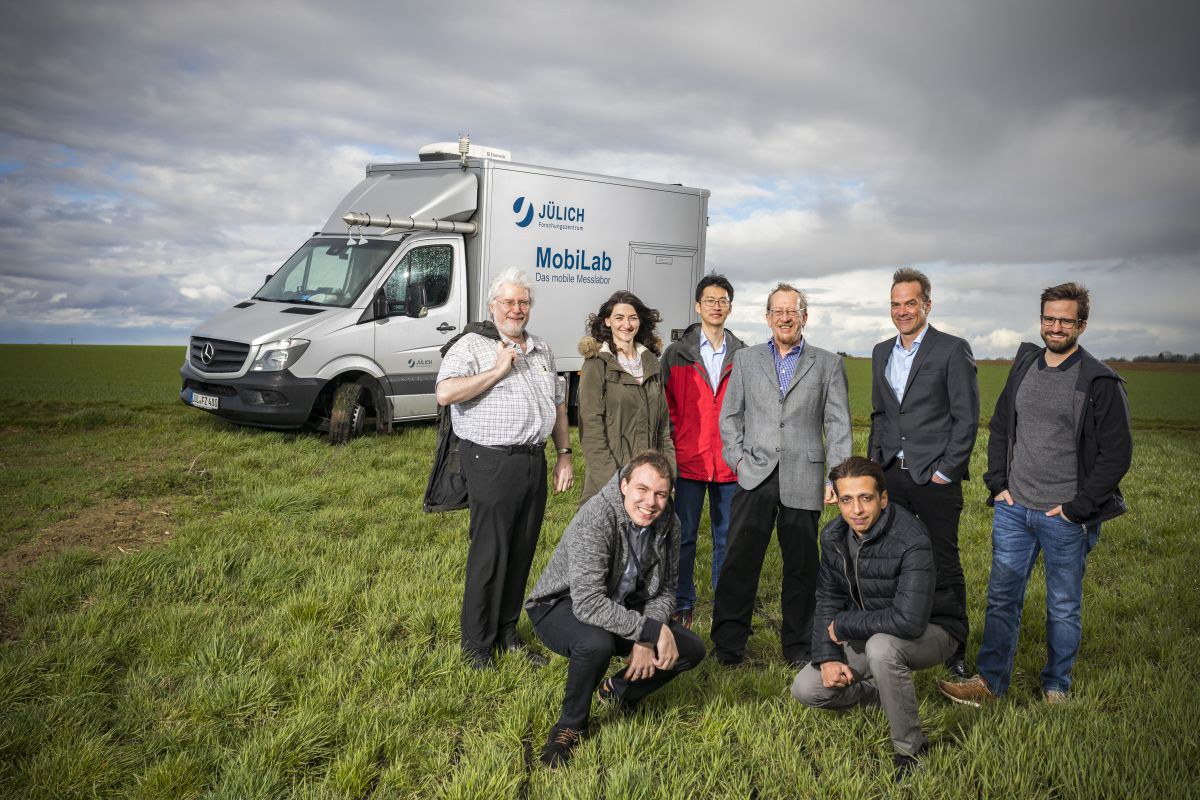Five Facts About City Air
Bad air in the cities, exceeded EU limits and diesel driving bans – Germany has been discussing this for quite some time. But the debate about nitrogen oxides is complicated – and not always are even basic facts known. Here, Dr. Franz Rohrer and his colleagues from IEK-8 can help. They investigate how emissions from transport affect air quality. We have compiled five exciting facts and findings.

1 “The total amount of nitrogen oxide emitted in Germany is irrelevant for human health.”
This is because the EU limit is only exceeded very rarely in this country: only on particularly busy main roads in around 60 German cities do nitrogen oxides occur in such high concentrations that they are considered harmful to health. 15 of the cities affected – including Cologne, Düsseldorf and Düren – are regarded as so-called intensive cities. Here, at traffic hotspots, even 50 micrograms of nitrogen dioxide per cubic meter is sometimes exceeded. But: if you move only 50 metres away from such a road, the values are well below the limit again. There, the nitrogen oxides have already been distributed and diluted in the ambient air. Therefore, it is not about a general air quality problem either in busy cities or in Germany as a whole, but of individual streets with very high traffic density.
2 “Driving bans and retrofi ts for diesel cars alone will not solve the problem.”

Even if there were suddenly not a single diesel car left on the road, excessive loads in the 15 German inten-sive cities would not fall below the EU limit, as is shown by Jülich projections for innercity German roads. This is because passenger cars with diesel engines are currently responsible for only about one third of the high nitrogen oxide emissions in cities. Trucks, buses and vans with diesel engines are much more problematic. They account for half of all nitrogen oxides emitted, although far fewer of them are on the road in German cities than passenger cars. On the one hand, they consume much more fuel due to their weight, therefore producing more nitrogen oxide. On the other hand, their catalytic converters (SCR-KAT) were developed for moving motorway traffic. In urban stop-and-go traffic, however, the SCR catalytic converter of a truck cannot heat up enough to convert the desired amount of nitrogen oxides into nitrogen, the harmless main component of clean air. Thus, retrofitting trucks makes much more sense than retrofitting cars
3 “The emissions of pollutants from traffi c must be reduced much more than we think.”
On particularly heavily polluted roads, nitrogen oxide emissions from vehicles would have to be reduced by about twice as much as the respective exceeding of the EU limit value would suggest. If, for example, a road with an annual average of 50 micrograms of nitrogen dioxide (NO₂) per cubic metre is to comply with the EU limit value of 40 micrograms, traffic emissions must be reduced not by 20% (equivalent to 10 micrograms NO₂), but rather by at least 40%.

The explanation: when speaking of nitrogen oxides, one actually means the sum of nitrogen monoxide (NO) and NO₂, which is harmful to health. Besides some NO₂, vehicles emit mainly NO. Only in a reaction with ozone is it transformed into the problematic NO₂. On polluted main roads, however, significantly more NO is blown into the air than ozone is present there. Therefore, the ozone is oft en completely “used up” during the conversion, while NO remains in the air. This “NO surplus” is the problem: even if NO is reduced by means of new catalytic converters or driving bans, the same amount of ozone will still be completely converted by NO – so the NO₂ value will not change much. Only when less NO is produced than ozone is present and when ozone is left over does the NO₂ value decrease noticeably at a heavily polluted traffic junction.
4 “Sophisticated urban planning leads to lower nitrogen oxide levels.”
In streets where large buildings string together without any gaps, nitrogen oxides and other traffic-related pollutants can be distributed only very poorly in the air. However, more airflow is created when gaps are specifically planned in the rows of houses. The air exchange thus improved can distribute pollutants better and measurably reduce high concentrations by dilution. For the same reason, even at busy intersections, excessive nitrogen oxide levels are rare: because several roads meet at this point, there is usually an improved air exchange.

“It doesn’t matter whether a city is big or small, but how dense the tra c is and how good the air exchange is in each individual street.”
Dr. Franz Rohrer
5 “Climate change may increase the problem.”
The ozone, which is responsible for the higher nitrogen dioxide (NO₂) levels in cities through the conversion by nitrogen monoxide (NO), is carried from rural areas to the cities by wind. In Europe, the measured values of this so-called background ozone have indeed remained more or less the same over the past 20 years and even decreased slightly. If the earth continues to warm up in the coming decades, however, this value will probably increase due to accelerated atmospheric chemical processes. Therefore, if NO at urban traffic junctions is not reduced in due time, it could react with the additional ozone and thus turn into even more noxious NO₂.

Further information:
Stickoxid-Rechner des Forschungszentrums Jülich
Diesel Controversy: “Retrofitting and exchange campaigns for passenger cars alone are hardly enough to meet the limits in cities.” [LINK ANPASSEN]
Hanno Schiffer / Jülicher Campusmagazin "intern"
